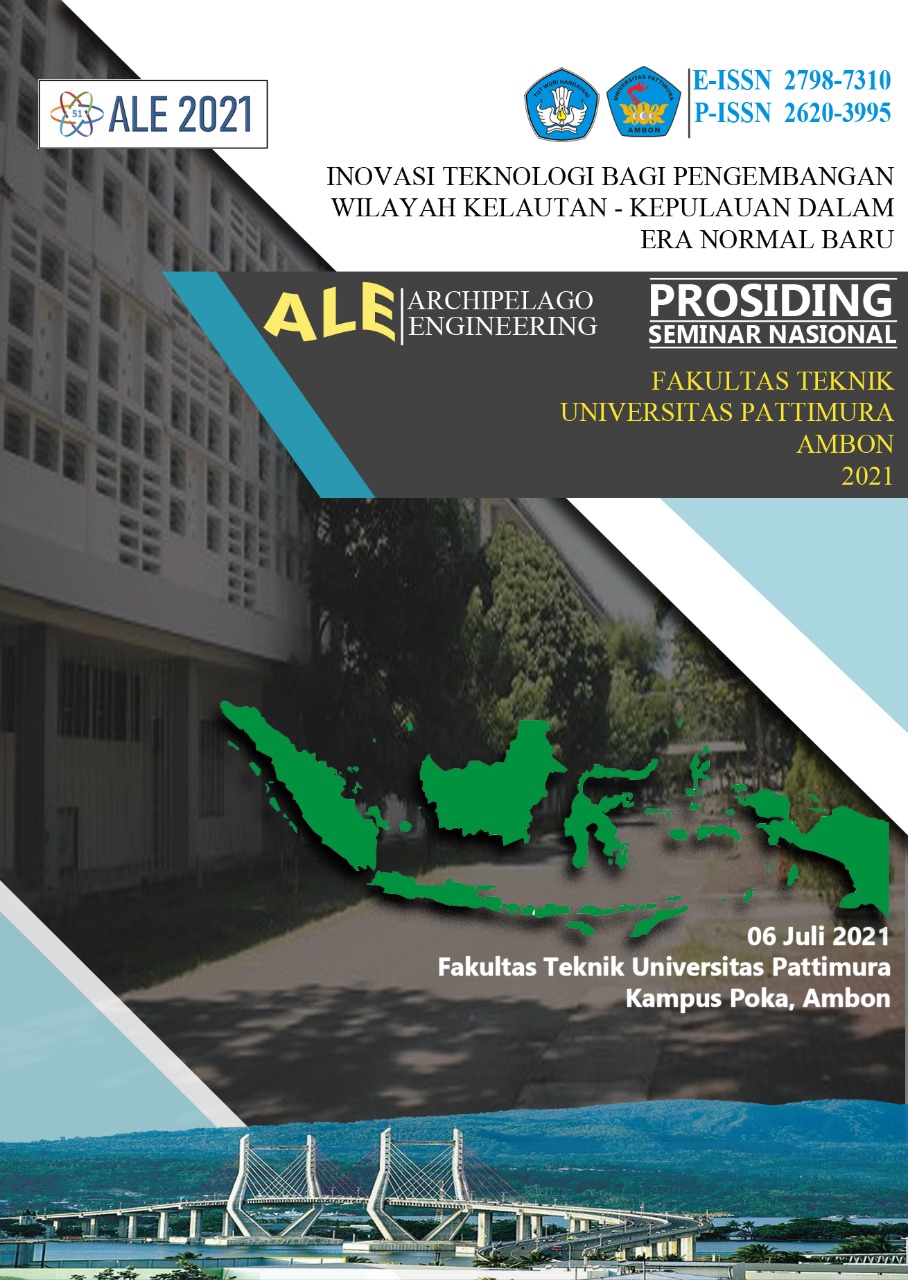ANALISIS EFEKTIVITAS PENUKAR KALOR PIPA HELIKAL DESTILASI MINYAK ATSIRI KAYU PUTIH
Abstract
The Eucalyptus plant is one of the essential oil-producing plants. Eucalyptus oil processing generally uses the distillation method. Traditionally used eucalyptus oil distillation uses a straight pipe condenser. The weakness of the straight pipe condenser is that the temperature of the condensate that comes out is still very high, this shows that the effectiveness of the straight pipe condenser is not optimal. To optimize the effectiveness of the distillation system condenser, a condenser with a helical pipe type condenser is designed in the essential oil distillation system. This study will vary the ratio of the pitch distance to the diameter of the condenser pipe, which aims to obtain an effective helical coil pitch ratio to optimize the effectiveness of the helical pipe condenser. This study uses the simulation method on COMSOL Multiphysics 5.4. The pitch ratio variant used is 2.1; 2.62; 3.15; 3.67; 4.2. The parameters that are constant in this study are the inlet fluid temperature on the tube side 373 K, the inlet fluid temperature on the shell side 288 K, the fluid inlet velocity on the tube side 0.2 m/s, and the fluid inlet velocity on the shell side 1 m/s. The results of the simulation by varying the pitch ratio show that the effectiveness increases as the pitch ratio value decreases, where the highest effectiveness is shown at pitch ratio of 2.1 which 75.9% and the lowest effectiveness is shown to pitch ratio of 4.2 which 70.7%.
Downloads
References
[https://doi.org/10.1016/j.enconman.2005.02.002]
[2] Fernández-Seara, J., Piñeiro-Pontevedra, C., & Dopazo, J. A. (2014). On the performance of a vertical helical coil heat exchanger. Numerical model and experimental validation. Applied Thermal Engineering, 62(2), 680–689.
[https://doi.org/10.1016/j.applthermaleng
.2013.09.054]
[3] Alimoradi, A., & Veysi, F. (2017). Optimal andcritical values of geometrical parameters of shell and helically coiled tube heat exchangers. Case Studies in Thermal Engineering, 10, 73–78. [https://doi.org/10.1016/j.csite.2017.03.003]
[4] Xu, X., Zhang, Y., Liu, C., Zhang, S., & Dang, C. (2018). Experimental investigation of heat transfer of supercritical CO2 cooled in helically coiled tubes based on exergy analysis. International Journal of Refrigeration, 89, 177–185.
[https://doi.org/10.1016/j.ijrefrig.2018.03.011]
[5] Mirgolbabaei, H. (2018). Numerical investigation of vertical helically coiled tube heat exchangers thermal performance. Applied Thermal Engineering, 136(February), 252–259. [https://doi.org/10.1016/j.applthermaleng.2018.02.061]
[6] Moawed, M. (2011). Experimental study of forced convection from helical coiled tubes with different parameters. Energy Conversion and Management, 52(2), 1150–1156. [https://doi.org/10.1016/j.enconman.2010.09.009]
[7] Tuncer, A. D., Sözen, A., Khanlari, A., Gürbüz, E. Y., & Variyenli, H. İ. (2021). Analysis of thermal performance of an improved shell and helically coiled heat exchanger. Applied Thermal Engineering, 184.[https://doi.org/10.1016/j.applthermaleng.2020.116272]
[8] Yan, S. R., Moria, H., Pourhedayat, S., Hashemian, M., Assadi, S., Sadighi Dizaji, H., & Jermsittiparsert, K. (2020). A critique of effectiveness concept for heat exchangers; theoretical-experimental study. International Journal of Heat and Mass Transfer, 159, 120160.[https://doi.org/10.1016/j.ijheatmasstransfer.2020.120160]
[9] Sheeba, A., Abhijith, C. M., & Jose Prakash, M. (2019). Experimental and numerical investigations on the heat transfer and flow characteristics of a helical coil heat exchanger. International Journal of Refrigeration, 99, 490–497.[https://doi.org/10.1016/j.ijrefrig.2018.12.002]
Copyright (c) 2021 Antonius Hatumessen, Nicolas Titahelu, Cendy S. Tupamahu

This work is licensed under a Creative Commons Attribution-ShareAlike 4.0 International License.
An author who publishes in the ALE Proceeding agrees to the following terms:
- Author retains the copyright and grants ALE Proceeding the right of first publication of the work simultaneously licensed under the Creative Commons Attribution-ShareAlike 4.0 License that allows others to share the work with an acknowledgment of the work's authorship and initial publication in this journal.
- Author is able to enter into separate, additional contractual arrangements for the non-exclusive distribution of the journal's published version of the work (e.g., post it to an institutional repository or publish it in a book) with the acknowledgment of its initial publication in this journal.
- Author is permitted and encouraged to post his/her work online (e.g., in institutional repositories or on their website) prior to and during the submission process, as it can lead to productive exchanges, as well as earlier and greater citation of the published work (See The Effect of Open Access).
Read more about the Creative Commons Attribution-ShareAlike 4.0 Licence here: https://creativecommons.org/licenses/by-sa/4.0/.






